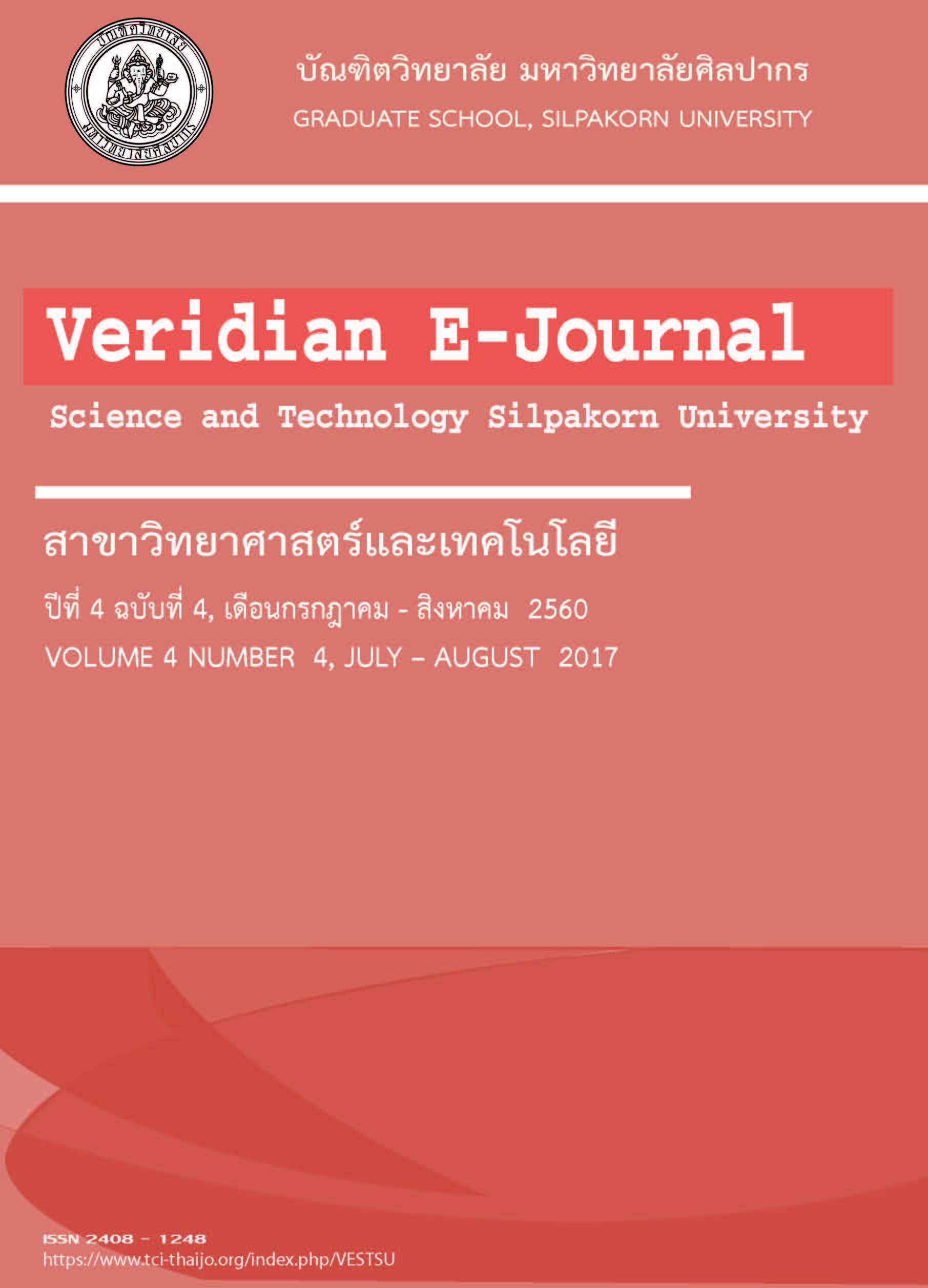การตรวจเชื้อไวรัสเด็งกี่จากซีรั่มผู้ป่วยสงสัยโรคไข้เด็งกี่ด้วยวิธี Multiplex qRT-PCR (Detection of Dengue Viruses from Patient Sera with Suspected Dengue Fever by Multiplex qRT-PCR)
Main Article Content
Abstract
เชื้อไวรัสเด็งกี่ (dengue viruses, DENV) เป็นสาเหตุทำให้ผู้ป่วยเกิดโรคไข้เด็งกี่ (dengue fever, DF), โรค ไข้เลือดออก (dengue haemorrhagic fever, DHF) และโรคไข้เลือดออกที่มีอาการช้อคร่วม (dengue shock syndrome, DSS) วิธีการตรวจทางวิทยาภูมิคุ้มกันโดยการใช้ DEN nonstructural (NS)1 antigen (Ag) และ anti-DEN IgM antibody (Ab) จำกัดสำหรับผู้ป่วยติดเชื้อ DENV ระยะไข้เฉียบพลัน เนื่องจากวิธีตรวจมีค่าความไวและความแม่นยำต่ำ วิธีToxorhynchites (Tx.) splendens mosquito isolation ยังคงเป็นวิธีมาตรฐานที่มีการใช้ในบางห้องปฏิบัติการ ถึงแม้ว่าวิธีนี้จะใช้เวลานานสำหรับการวินิจฉัยผู้ป่วยในการศึกษาครั้งนี้ ผู้วิจัยพัฒนาวิธี Multiplex quantitative real-time reverse transcriptase-polymerase chain reaction(qRT-PCR) โดยการใช้ primer ส่วน E/prM เพื่อตรวจเชื้อ DENV จากซีรั่มผู้ป่วยสงสัยโรคไข้เด็งกี่ซึ่งให้ผลบวกด้วยวิธีImmunochromatography (IC) เปรียบเทียบกับวิธี Toxorynchites (Tx.) mosquito isolation วิธี IC ตรวจพบผู้ป่วยสงสัยโรคไข้เด็งกี่ที่มีผลบวกต่อ DEN NS1 Ag หรือ anti-DEN IgM/IgG Ab จำนวน 68 ใน 76 ราย (89.5%) วิธี Multiplex qRT-PCR และ วิธี Tx. mosquito isolation ตรวจพบเชื้อ DENV จากซีรั่มผู้ป่วย 49 ราย (72.1%) และ 48 ราย (70.6%) ตามลำดับ วิธี Multiplex qRT-PCR ตรวจพบเชื้อ DENV-1 จากซีรั่มผู้ป่วยที่มีการติดเชื้อ DENV ซ้ำ (DEN NS1+, anti-DEN IgM/IgG+) ในขณะที่วิธี Tx. Mosquito isolation ตรวจไม่พบเชื้อ DENV วิธี Multiplex qRT-PCR และ วิธี Tx. mosquito isolation ตรวจพบ DENV-3 (19, 38.8%; 19, 39.6%) > DENV-4 (16, 32.7%; 16, 33.3%) > DENV-1 (8, 16.3%; 7, 14.6%) > DENV-2 (6, 12.2%; 6, 12.5%) ตามลำดับ ค่าความไว, ค่าความจำเพาะและค่าความแม่นยำของวิธี Multiplex qRT-PCR เปรียบเทียบกับวิธี Tx. mosquito isolation เท่ากับ 93.8%, 80.0% และ 89.7% ตามลำดับ ดังนั้น วิธี Multiplex real-time RT-PCR น่าจะเป็นทางเลือกใหม่ในการตรวจเชื้อ DENV หรือประยุกต์ใช้ตรวจเชื้อไวรัสชนิดอื่นต่อไป
Dengue viruses (DENV) cause dengue fever (DF), dengue haemorrhagic fever (DHF), and dengue shock syndrome DSS) worldwide. Immunological diagnostics based on IgM and/or nonstructural protein 1 (NS1) antigen are limited for acute dengue infection due to low sensitivity and accuracy. Toxorhynchites (Tx.) splendens mosquito isolation continues to be gold standard performed in some laboratories, though the prolonged turn-around time for clinical diagnosis. In this study, we developed Multiplex quantitative real-time reverse transcriptase-polymerase chain reaction (qRT-PCR) using E/prM primers to detect DENV from Immunochromatography (IC)-positive patient sera suspected with DF compared with Tx. mosquito isolation. IC method examined 68 of 76 (89.5%) patients suspected with DF who had positive DEN NS1 Ag or anti-DEN IgM/IgG Ab. Multiplex qRT-PCR and Tx. mosquito isolation detected DENV from 49 (72.1%) and 48 (70.6%) patient sera, respectively. Multiplex qRT-PCR could detect DENV-1 from one patient who had secondary infection (DEN NS1+, anti-DEN IgM/IgG+) whereas Tx. mosquito isolation could not detect. Multiplex qRT-PCR and Tx. mosquito isolation showed DENV-3 (19, 38.8%; 19, 39.6%) > DENV-4 (16, 32.7%; 16, 33.3%) > DENV-1 (8, 16.3%; 7, 14.6%) > DENV-2 (6, 12.2%; 6, 12.5%), respectively. Sensitivity, specificity and accuracy of Multiplex qRT-PCR compared with Tx. mosquito isolation were 93.8%, 80.0% and 89.7%, respectively. Therefore, Multiplex qRT-PCR may be alternative method for DENV detection and apply to examine the other viruses later.

